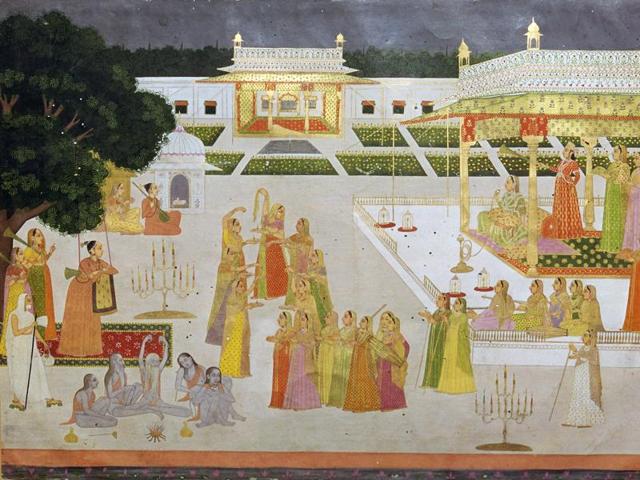How the Mughals celebrated Diwali at Red Fort, unified religions
The Rang Mahal in Lal Quila (Red Fort) was the designated centre for the royal celebrations of Jashn-e-Chiraghan or festival of lights and the festivities were carried out under the Mughal king himself.
Diwali sparks memories of the bygone Mughal era for Old Delhi residents when the festival of lights was a unifier of people from all religions.

The Rang Mahal in Lal Quila (Red Fort) was the designated centre for the royal celebrations of Jashn-e-Chiraghan or festival of lights and the festivities were carried out under the Mughal king himself.
Preparations would start a month in advance — the best halwais (confectioners) were brought from Agra, Mathura, Bhopal, and Lucknow. Desi ghee was arranged from nearby villages to prepare delicacies.
Fireworks were organized in the fort’s vicinity. The palace was lit with diyas, chandeliers, chiraghdaans (lamp stands), and faanooses (pedestal chandeliers).
ROYAL CELEBRATION
Delhi chronicler and historiographer RV Smith said Mughal emperor Akbar had started the tradition of royal Diwali celebrations in Agra, which was continued by his successors until the Mughal Empire was taken over by the British after the 1857 rebellion.
“When Shahjahan shifted the capital to Delhi, he used to celebrate the festival with same vigour inside the fort. He added another feature to the festivity with the introduction of ‘Akash Diya’ (sky lamp)”.
Akash Diya, a giant lamp perched on a 40-yard-high pole, was installed in the fort and was lit up on Diwali. The lamp not only illuminated the fort but also cast its glow right up to Chandni Chowk.
Around four mounds (over 100 kilograms) of cotton-seed oil or mustard oil fed the lamp and big ladders were used to put oil and cotton (batti) in the vessel, Smith said.
Nobles and rich traders would also light up their havelis and mansions with earthen lamps. Also, the Hindu families used to place diyas at the canal running through in the middle of Chandni Chowk. The Sikhs at Gurudwara Sisganj contributed oil and Muslims would provide cotton (batti). “We have heard from our elders that the entire stretch from Chandni Chowk to Fatehpuri gleamed because of the reflection of the flame in the water,” said Om Prakash, a resident of the Walled city area.
LAKSHMI PUJAN IN THE FORT
Columnist Firoz Bakht Ahmed said a special Lakshmi Pooja used to be organised in the fort during the reign of last Mughal emperor Bahadur Shah Zafar. Pooja samagri (material used for worship) was sourced from Katra Neel in Chandni Chowk.
“Aatishbaazi (fireworks) was sent from the Paiwalan area behind Jama Masjid. The traditional Diwali sweets including kheel, khaand, batashey, kheer, and mewa were prepared in the palace both for the nobility and the commoners. People in large numbers would gather in the ground outside the fort to witness a grand fireworks show arranged for them. It was held under the supervision of Zafar’s army generals and officers,” he said.
Shahjahan sent his queens, princes, and princesses to Mehrauli and they would watch the fireworks from Qutb Minar, Ahmed said.
COMMUNITY BONDING
William Dalrymple’s book, ‘The Last Mughal: The Fall of Delhi, 1857’, says, “Zafar would weigh himself against seven kinds of grain, gold, coral, etc and directed their distribution among the poor.” The Hindu officers were presented gifts on the special occasion.
Regal Diwali celebration in the fort amply proved that the festival has always been a joyous occasion to celebrate communal harmony. Elderly residents of Shahjahanabad recall how a thali full of sweets, kheel-batashey, and firecrackers were sent to Muslim neighbours.
“The festival was observed with equal passion by one and all. The festivities would start a month in advance as women folk started making sweets at home. Naariyal burfi, besan, or moong laddo were prepared and stocked in advance and distributed among relatives and friends,” said Kinari Bazaar resident, Atam Prakash Agarwal.




